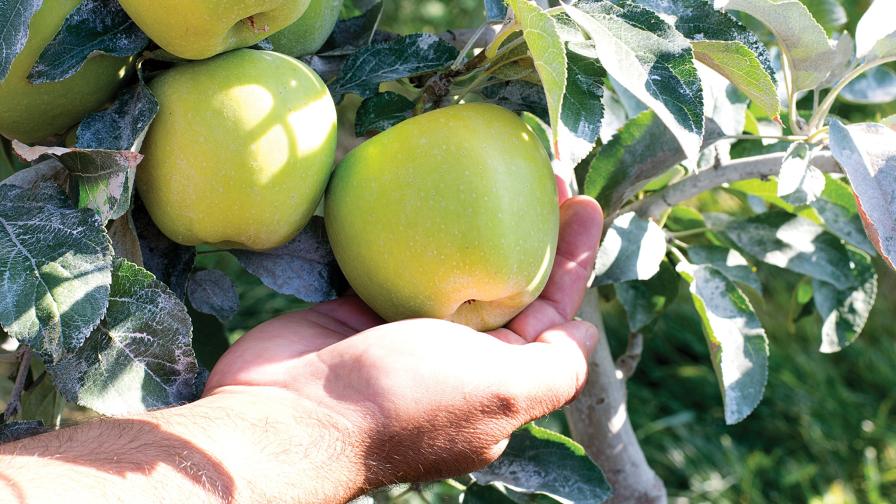New York Researchers Celebrate End Of Cicada Season

The first two weeks of June were quite a challenge for fruit growers experiencing Brood II of the 17-year cicada, Magicicada septendecim, according to Cornell University entomologist Peter Jentsch. Populations were variable throughout New York’s Hudson Valley, with a very strong edge effect in blocks bordering woodlands and concentrated emergence within apple blocks heavily infested in 1996. The first appearance of adults was observed on May 27. Egg-laying slits in pencil-size branches occurred the following day. Winds from a June 8 storm front began to break limbs that once bore fruit but were damaged from cicada oviposition.
Tree fruit producers with high-pressure cicada blocks made at least one application of an insecticide to reduce egg-laying damage to branches during the first week in June. Yet growers have had a difficult time discerning how effective these treatments really are. In most first- and second-cover treatments used against plum curculio and codling moth, the cicada could still be found in trees shortly after applications. Some treatments induce a knock down effect lasting only a few hours before the insect is back on its feet, climbing up the trunk and limbs to cause trouble. This “mostly dead” effect or moribund state, has been observed in larger insects including the brown marmorated stink bug. The moribund effect can last for a few days before the insects either succumb to the toxic effects of the insecticide or revive and go back to “business as usual.” During this “down time” they are vulnerable to predation by mammals and other insects, such as foraging ants.
Although pyrethroids have a tainted history of mite flare-up from the disruption of predatory arthropods and significant loss of efficacy at higher temperatures, they are relatively user friendly with low mammalian toxicity and broad-spectrum activity to help combat the tree-fruit pest complex, and so, maintain an important role in the toolbox during these days of plague-like emergences of the 17-year cicada and looming presence of the invasive brown marmorated stink bug.
As of June 27, most growers are about a week away from the end of Brood II. There are fewer and fewer adult cicada with each passing day, says Jentsch. At this point there is relatively little growers can do to prevent injury as oviposition is nearly complete and any adults left by the beginning of July will no longer be a threat.
Jentsch and others at Cornell’s Hudson Valley Lab chose to mark the end of the cicada season in a unique way: they decided to have a cicada fest, or “feast,” at the lab. Said Jentsch: “If you can’t beat ’em … grill ’em!” Every try a cicada-kabob?










